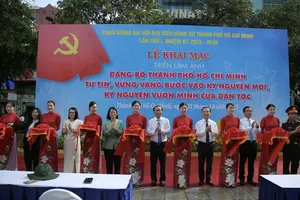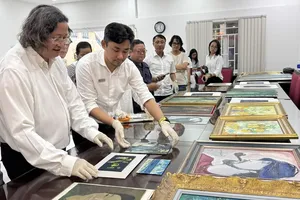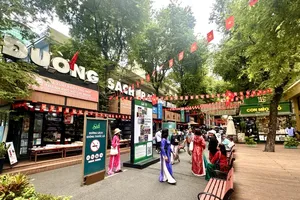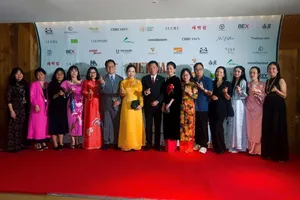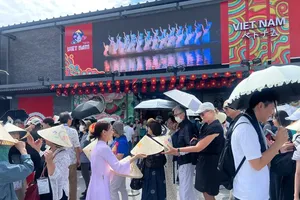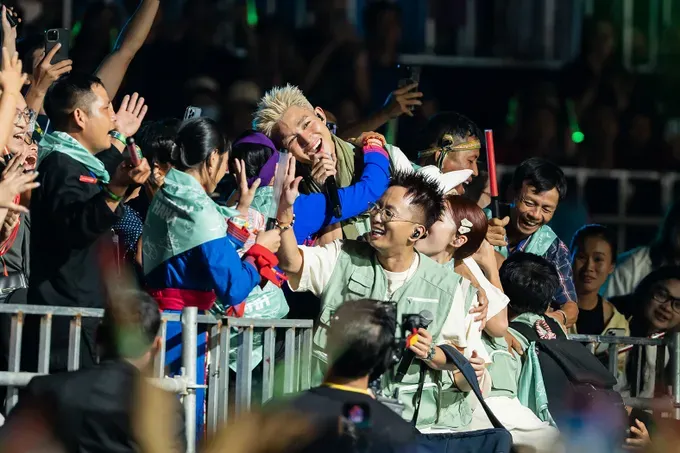
From large-scale commercial tours to official 'national concerts,' these events are generating significant cultural and economic buzz. Crucially, this boom is accompanied by a positive shift in public sentiment that audience admiration for both the programs and the artists has changed in a positive direction, indicating a growing appreciation for higher-quality production and performance standards. This increasing focus on quality is seen as the key factor creating new momentum for the industry’s continued development.
The recent surge of large-scale music events marks a significant shift, creating fresh expectations for both the music industry and audience habits. Throughout August and September, a series of live art performances championed themes of nationalism and patriotism, including shows like To quoc trong tim (Fatherland in the Heart), Tu hao la nguoi Viet Nam (Proud to be Vietnamese citizens), and V Concert - Rang ro Viet Nam (V Concert - Radiant Vietnam). These followed the 'making waves' popularity of commercial hits from 2024 onward, such as Anh trai say hi ( Brother say hi), Em xinh say hi ( Pretty girl say hi) and Chi dep dap gio ( Beautiful sister rides the wind) alongside a proliferation of major and minor personal live shows by artists.
The benchmark for large-scale production was arguably set by the BlackPink concerts in Hanoi in July 2023, which saw tens of thousands of audience members, both domestic and international, flock to the capital. This level of organisation and draw became the desire of domestic artists.
Remarkably, just two years later, a wave of Vietnamese concerts ranging from political-themed to commercial have begun to rival the scale of that international benchmark. These events have consistently created a ‘fever’ of ticket hunting and sold-out shows.
Crucially, the domestic concert has transcended the basic act of watching a performance. It has evolved into a place for the audience to experience deep emotions and a space where artists can connect with the community and their audience in a meaningful and aesthetic setting.
No longer merely copies of international productions, domestic concerts now boast their own distinct format and quality. They are fast becoming the priority choice of young people, solidifying their place as a vibrant, mature, and influential force in the national entertainment landscape.
A 34 year old man from Ho Chi Minh City’s Binh Thanh Ward attended all eight nights of the Anh trai vuot ngan chong gai (Brother overcomes a thousand obstacles) concert series and shared the profound sense of unity he felt while singing along to beloved Vietnamese hits. “Vietnamese youth music carries a pride that no international concert can replicate,” he said.
He observed that domestic music events are becoming increasingly professional from ticketing and audience reception to the meticulous curation and staging of each performance according to international standards. He added that beyond the stage, performers enthusiastically engage with their fan communities at fan club booths, fostering a unique sense of connection between artists and tens of thousands of attendees. The shared energy of coordinated fan chants further amplifies the vibrant atmosphere.
He affirmed that young audiences are more than willing to invest in high-quality and world-class music programs that celebrate Vietnamese cultural identity.
New wave is transforming consumer preferences
Selecting concerts and artists to follow serves as a fresh expression of personal taste and a method for engaging with cultural and entertainment experiences. Consequently, Vietnamese concerts represent not only the accomplishments of production companies and artists but also a distinct indication that the preferences of Vietnamese audiences are evolving into a new era, undergoing significant transformation.
Deputy Head Nguyen Thi Ngoc Diem of the Department of Culture - Arts, the Propaganda and Mass Mobilization Commission of the Ho Chi Minh City Party Committee remarked that there exists a generation of audiences who are progressively developing their aesthetic taste and capacity to appreciate art and culture. The surge in concerts over the last 1-2 years is attributed to the high standards of production, the caliber of artists, and the innovative approach to redefining the identity of the mass stage.
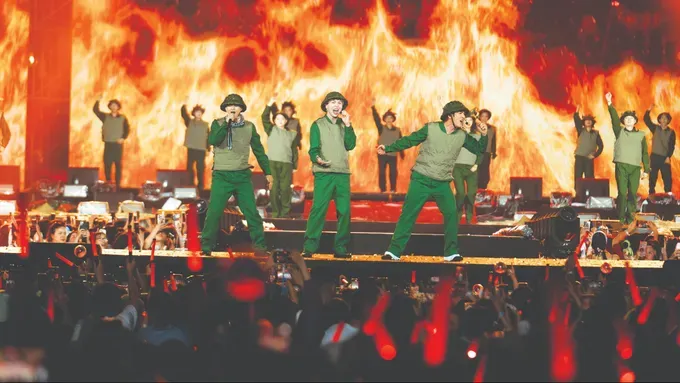
Gaining insights from established entertainment sectors contributes to enhancing the quality of the local performance industry, encompassing music, organization, machinery systems, and artist performance skills, among others. Notably, rather than adhering strictly to international standards, there is a significant trend of localization in music that is emerging and being well-received by audiences.
The most notable aspect of this trend is the incorporation of traditional elements into music. This reflects the technical and aesthetic advancement of the current generation of young artists, Deputy Head Nguyen Thi Ngoc Diem remarked.
It is evident that fan club communities and the audiences of Generation Z and Generation Y are significantly influencing the formation of artistic trends. They have grown up in a digital age, fostering a new, more interconnected, and diverse era of art.
With the transition from being a passive audience to becoming active creators, in addition to enjoying the performances, you are now inclined to engage in the creation of artistic content from those experiences. With the advent of smartphones and platforms like TikTok, YouTube, Reels, Facebook, and Instagram, young individuals are actively filming, editing, and publishing their own content directly from concerts.
On social media, fans of Vietnamese concerts produce brief summaries of each cultural performance, elucidating the origins of the songs and their melodies. The younger audience is not merely content with catchy mixes or visually striking stages; they are also keen to delve deeply into the melodies, instruments, drums, and beats. The surge in domestic concerts indicates that Vietnam's performing arts industry is gradually maturing, establishing its own identity rather than merely emulating international models.
Furthermore, domestic audiences, particularly the youth, are experiencing a significant transformation, as they seek not only entertainment from concerts but also cultural experiences, national pride, and a sense of community connection.
This reality requires continuing to professionalize the organization stage, improve the quality of artists, and at the same time strongly exploit the localization factor, so that Vietnam's music industry can become a sustainable creative economy in the future.


